
FEATURE — Early in Cedar City’s history, a livestock association was formed using the railroad for shipping animals and wool to Salt Lake City or California. By the mid-1940s a few ranchers started the Cedar Livestock Market and built the barn that is still used for weekly auctions.

Although the original stone blocks of the barn are still in place, the building has been updated through the years by several owners. Current owner and auctioneer Bret Whittier added The Market Grill and a barber shop in the ‘70s, but the real action happens on auction days.
These days, anyone can participate in an auction at the Cedar Livestock Market. Boots and cowboy hats are optional, but participants usually wear them. Any person can walk in and register and bid on a beef cow or lamb chops on the hoof and arrange for a local meat packer or slaughterhouse to pick it up and deliver it all wrapped for the freezer.
Auctioneers such as Duke Cox stand at the pulpit and chatter so fast it is hard for first-timers to catch just what they are saying.
Cox opens by giving a beginning number and some “sylawords,” which help with his rhythm to connect more numbers. For example, Cox said, “45, 50, 65, 80 eventually will become forty-five, would you bid 50? 55, would you bid 60? 65, would you bid 80?” All these briskly spoken words are also known as “cattle rattle.”
Cox is often asked how he learned to talk so fast.
“I went to auctioneer school in St. Joe (St. Joseph), Missouri,” he said. “This fast talking is indigenous to United States. It takes a lot of practice. I still have to keep my lips limber by drilling with tongue twisters such as ‘Betty Botter bought some butter, but she said this butter’s bitter. If I put it in my batter it will make my batter bitter.’”
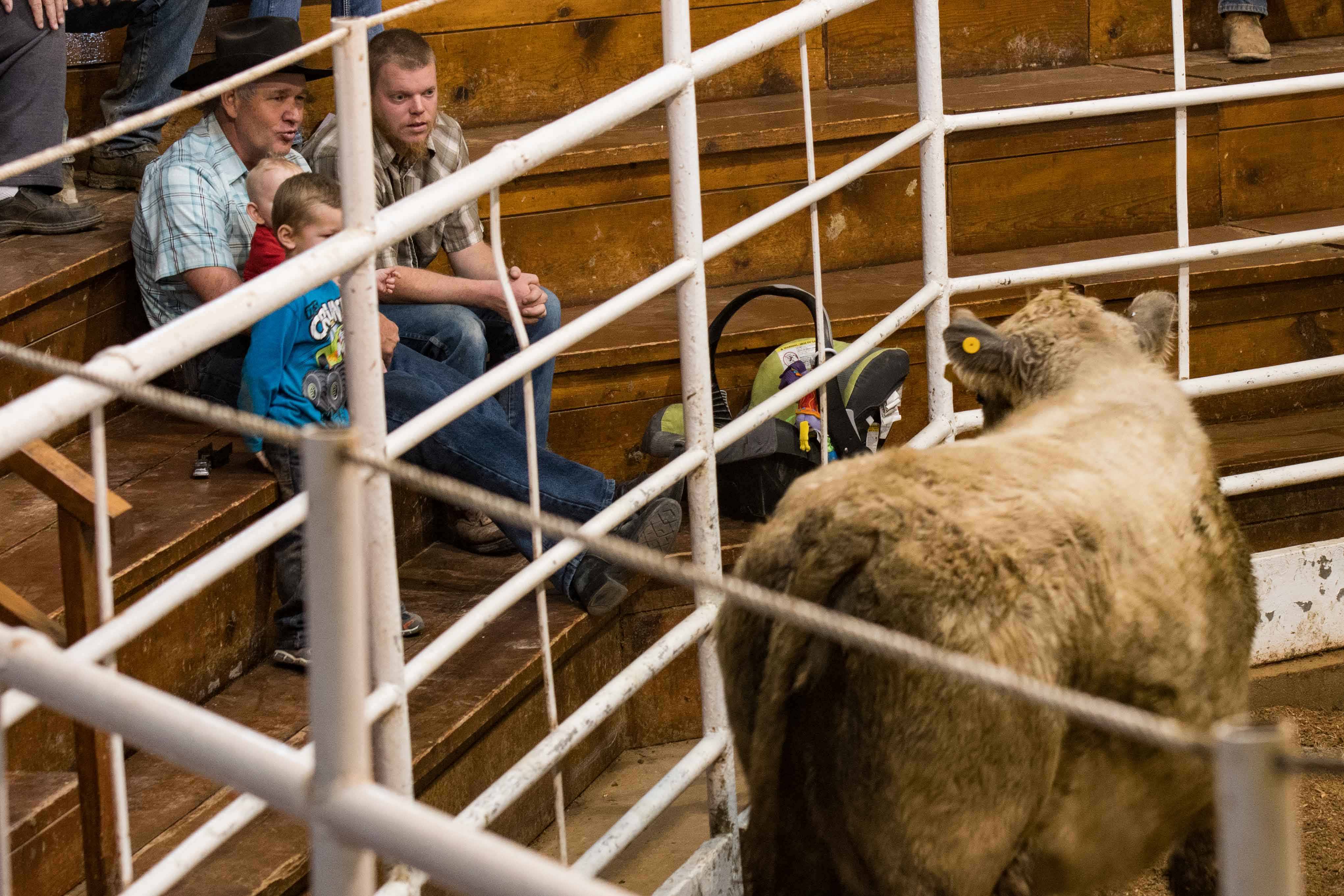
Participants in auction day never know exactly what to expect. On Feb. 9, one lady brought to auction just one cute goat, but conversely, a large truckload of good-looking Angus steers were also herded in.
“Never know what will be offered,” one rancher in the audience muttered, “but sheep are up and cattle down.”
Although dairy cows were the first to graze the mountains around Cedar City as early as 1869, settlers soon realized that sheep were ideally suited to Southern Utah ranges.
Partially accounting for today’s popularity of sheep are passionate artisan cheesemakers across the country. The soft curds of goat and sheep milk make gourmet cheeses such as feta, brie and camembert and are labeled according to their workshop or factory. Red Acre Farm in Cedar City sells such cheese made by locals.
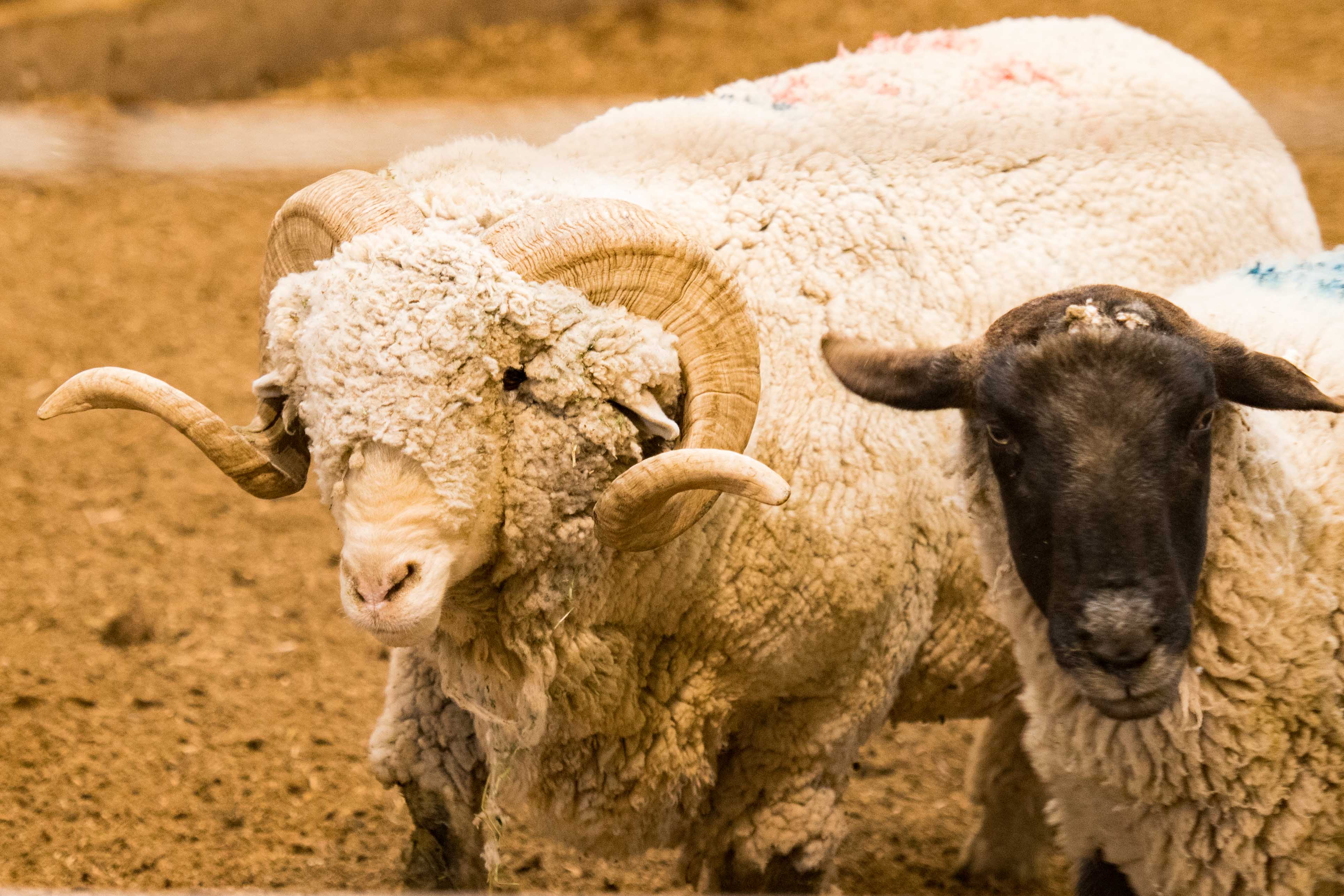
First-time participants at a livestock auction need to know a few things, such as the difference between a ewe and a wether (castrated male sheep) or a ram lamb if they have their lamb teeth. Baby goats are called “kids” regardless of gender. Adult females are called “does” or “nannies,” and intact males are “bucks” or “billies.” And as for cattle, a steer is castrated, a bull is not. A young female cow is referred to as a “heifer.”
Some ranchers may have a veterinarian label their heifers with a number on their rump if they have been bred – an “0” if they are not pregnant. A young dairy heifer that’s seven months pregnant is called a “springer,” and a dairy cow that is presently giving milk is called “fresh.” A heifer that is not bred is called “open.”
Occasionally there are a few surprises, rancher Ron Mulcahy said. One day he bought a nice open cow and a few weeks later she produced a little heifer – and thus he got two for one, he said.
The auction barn in Cedar City serves a large geographic area from the Arizona Strip to as far away as Eureka, Nevada, and down to Las Vegas, Nevada. The nearest auction house to the north is in Salina and to the south is Winslow, Arizona, and there is another to the west in Bakersfield, California.
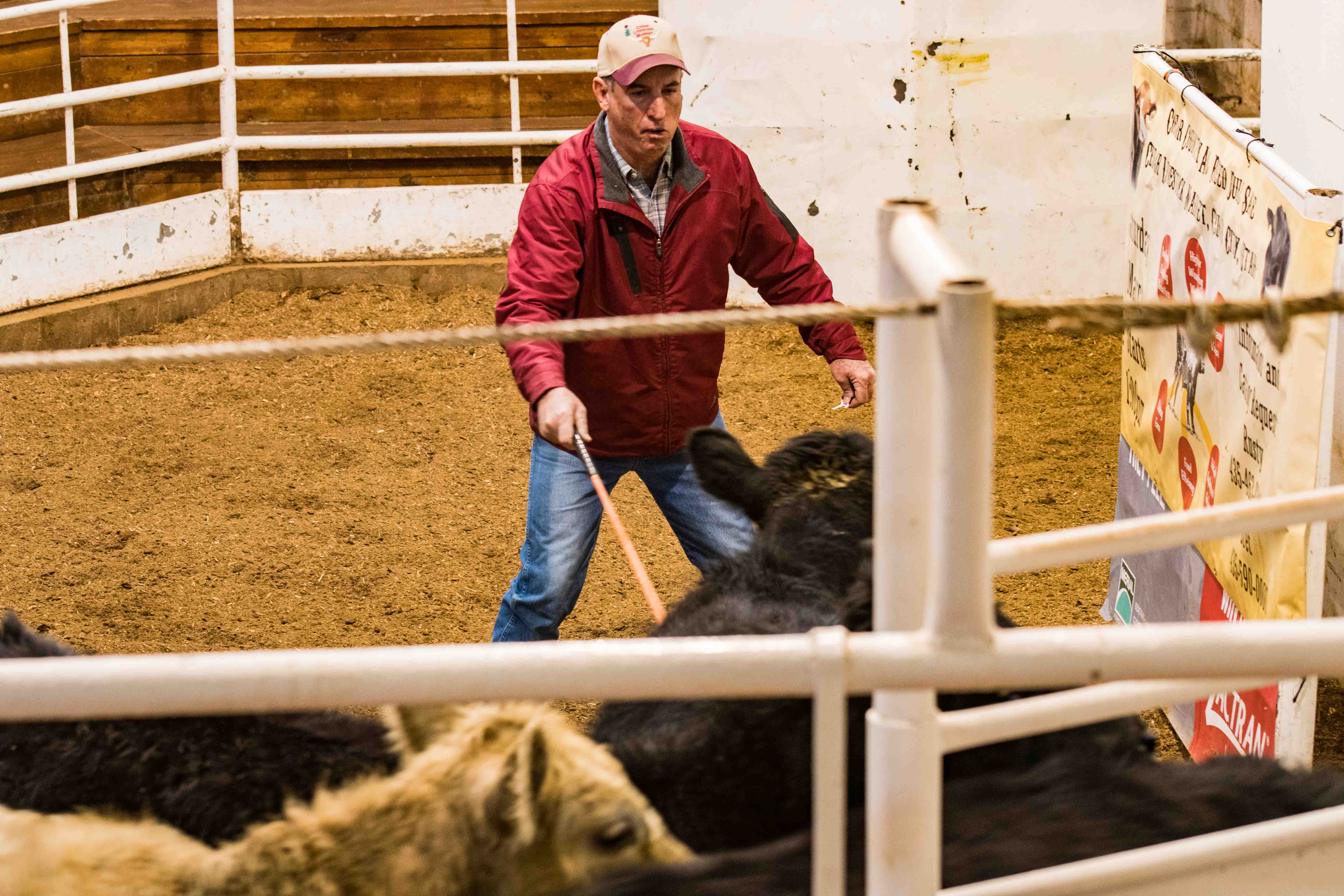
Sellers are charged a small fee for use of the auction barn and an auctioneer – also known as a bid caller – who helps get the highest price for the sale of their animals.
Joe Taylor has been bid calling for more than 40 years and is an icon across the nation. Met Johnson, Bret Whittier and Duke Cox, are some of the regular auctioneers used by the barn today.
The ringman gets the action started, using a long prodding stick and operating the gate. He lets either a single animal into the arena or several similar animals owned by one entity – referred to as a “lot.” Skilled auctioneers can move up to 150 lots through the auction barn per hour. If a lot contains bulls, the prodding stick is still used, but the cowboy puts the gate or fence between him and the bulls. This slows the bidding process somewhat but not the excitement.
Both buyers and sellers sit on wooden bleachers clustered in friendly groups as associates and competition. The bidders often disguise their bids using secret signals. They may signify a bid with a barely perceptible nod or by touching their nose, tugging at an ear or wiggling a finger. Novices turn over a number card to indicate a bid. It’s a game with its own set of rules, Cox said.
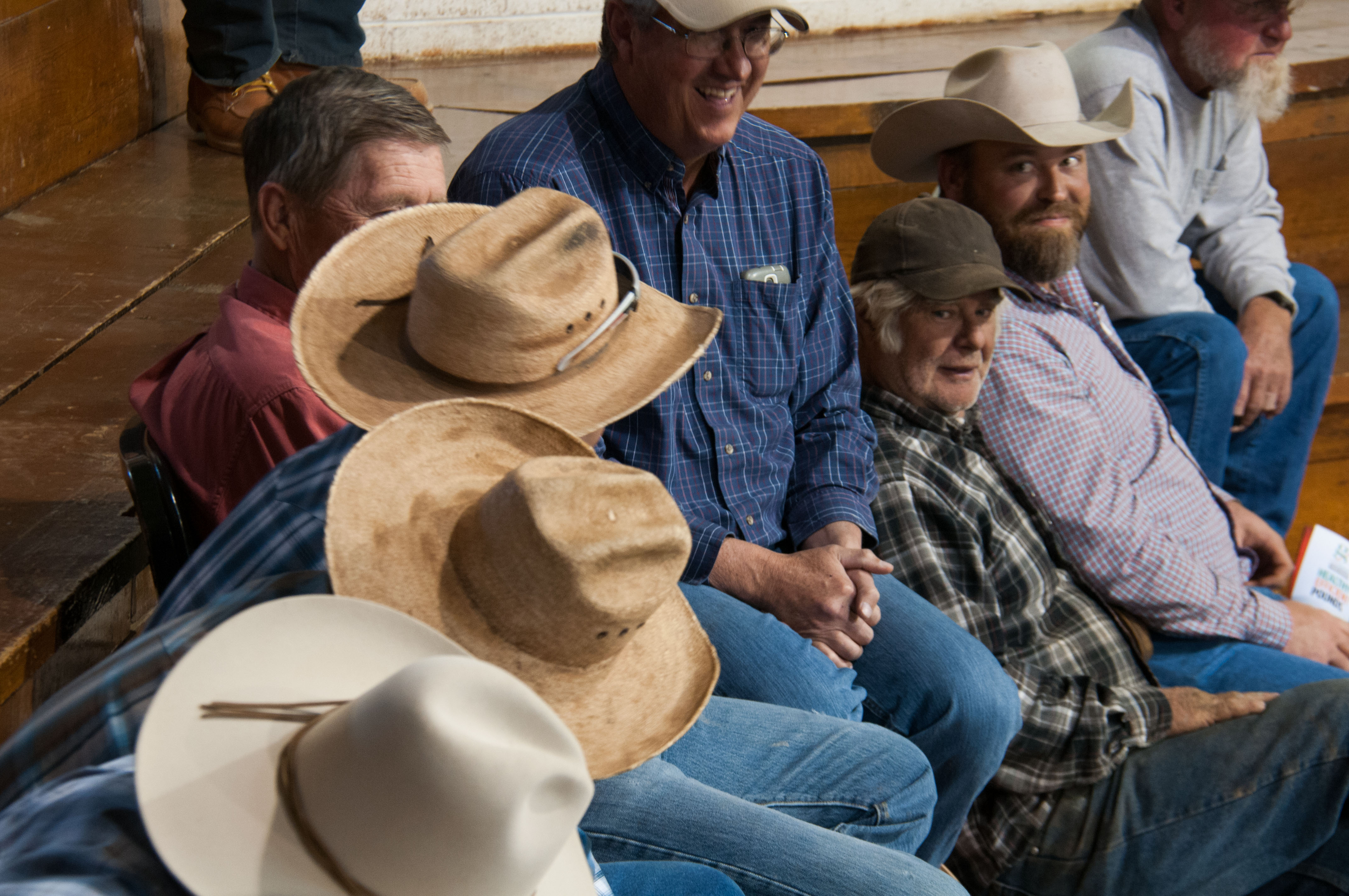
The serious auctioneer watches carefully and, with much chatter and hand movements, eventually ends with “Sold to …” and tags the buyer usually by his ranch name.
The animals are then turned out by an exit gate as a new lot enters. The auctioneer not only adds excitement to the event but draws some chuckles from the audience with comments such as “Here comes your mutton stew.”
“On auction day a producer can load his animals in his trailer at 10 a.m., sell by 11 a.m. and pick up his check that afternoon,” Whittier said. “In this process producers discover true price as several people are bidding on the animal on that day resulting in true value.”
Cattle numbers at the auction barn have declined over the last couple of decades due to listing of the Mohave desert tortoise as an endangered species and the creation of national monuments and wilderness areas shrinking cattle grazing area, said Chad R. Reid, Utah State University Extension professor, Iron County director and agriculture and natural resources agent.
Read more: Battle over cattle: Controversy at Grand Staircase-Escalante National Monument
Also the auctioning system has changed with the advent of the video auction. With modern technology, ranchers can sell via satellite to buyers around the country.
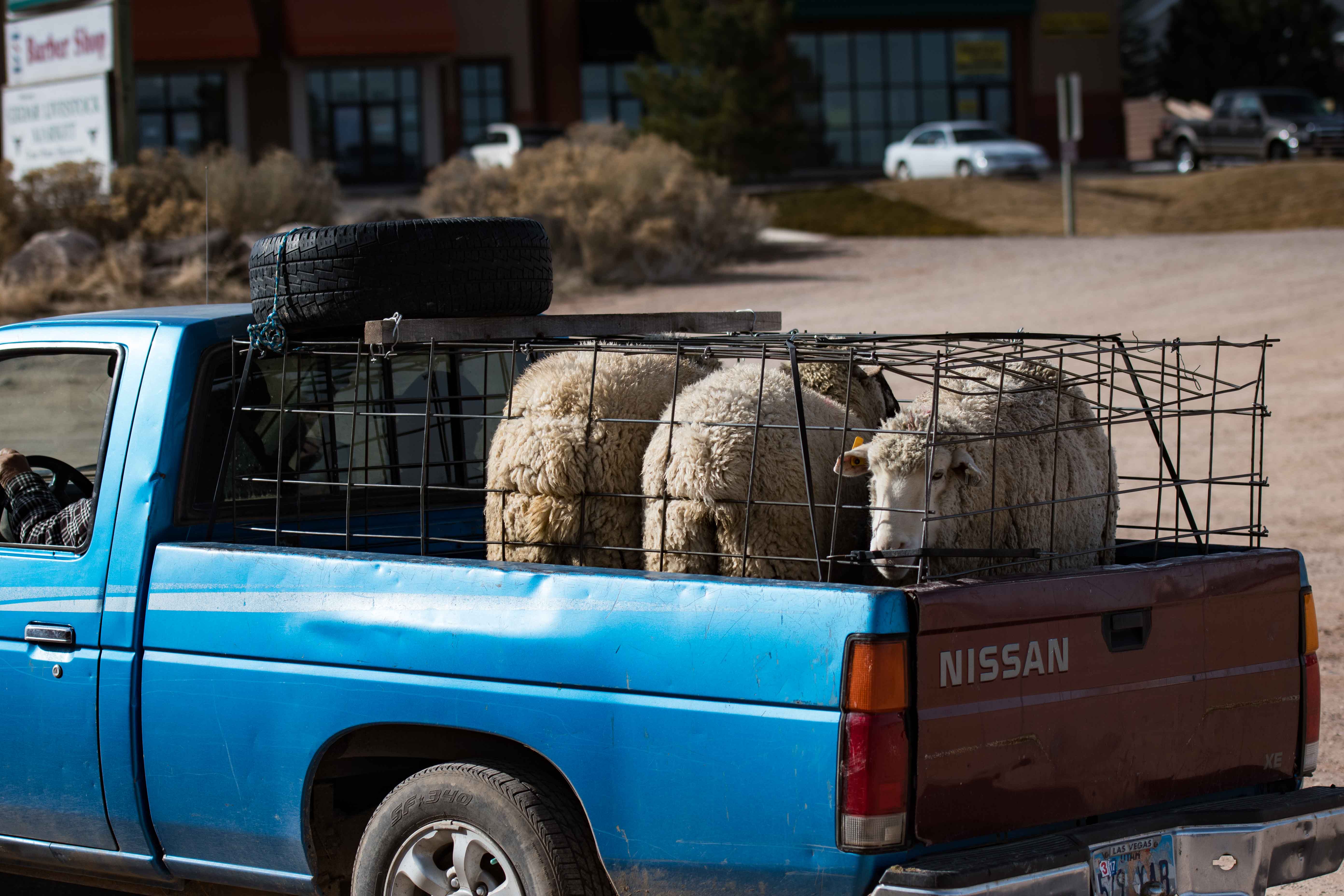
However, there will always be a need for the auction barn accommodating small-scale farmers, ranchers, 4-H and Future Farmers of America.
At the end of the day, those lucky enough to have some acreage will load their newly purchased livestock and head for home. Of course they will have already made certain the pasture is tightly fenced and that they have installed a water tank, purchased a supply of feed and constructed a shelter to protect their livestock from the weather. Lambs may be cute, but keeping one in your bathroom just won’t do.
Visiting the Cedar Livestock Market
The Cedar Livestock Market’s barn is located on Highway 56 at 2290 W. 400 North, Cedar City. Auctions are held every Thursday at 11 a.m. The barn is open until 5 p.m. The auction regularly handles cattle and smaller animals such as sheep and goats and sometimes hogs and llamas. Horses are auctioned off only on the first Thursday of each month at 10 a.m. They also book other special sales. Call telephone 435-586-9312 for more information.
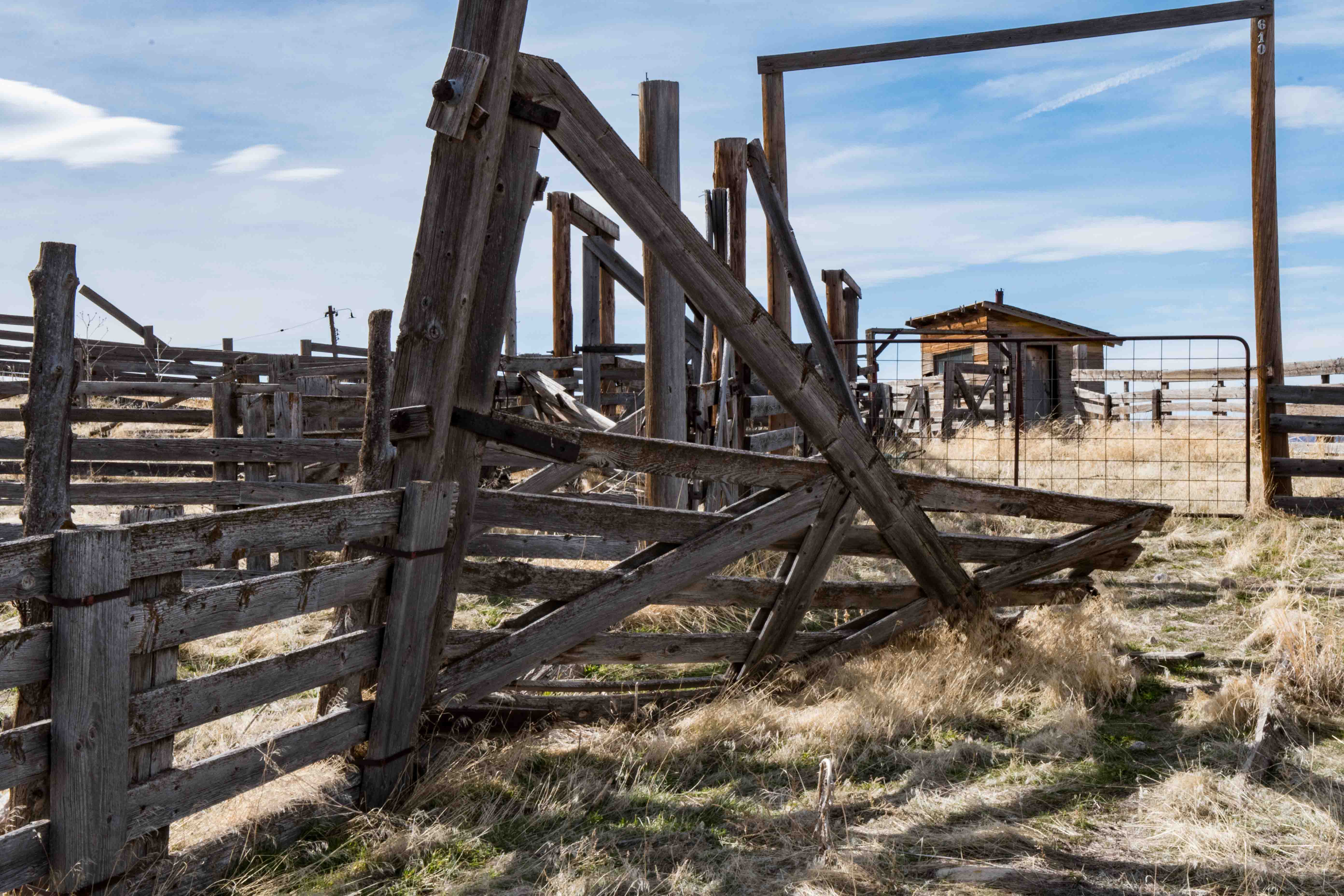
The original livestock shipping center from Cedar City’s earlier days is farther west on Highway 56. The remains of the enterprising hub, which included corals, dipping vats and shearing sheds, are visible along with the old rail tracks
And if you’re in Cedar City in the fall, be sure to check out the annual Cedar Livestock & Heritage Festival sponsored by Iron County Cattlemens Association and other businesses. The two-day event honors Iron County’s rich agricultural heritage and features one of the most unique parades in the country; the Sheep Parade includes historic sheep camps, antique tractors, vintage cars and approximately 1,000 sheep herded down Cedar City’s Main Street.
Read more: Iron County celebrates heritage with festival, sheep parade
Photo gallery follows below. Click on photos to enlarge, use left-right arrow keys to cycle through the gallery.

Attendees at the Cedar Livestock Market, Cedar City, Utah, Feb. 9, 2017 | Photo by and courtesy of Jim Lillywhite, St. George News

Auctioneer Duke Cox acknowledges an accepted bid amount, Cedar Livestock Market, Cedar City, Utah, Feb. 9, 2017 | Photo by and courtesy of Jim Lillywhite, St. George News

Bull is auctioned at the Cedar Livestock Market, Cedar City, Utah, Feb. 9, 2017 | Photo by and courtesy of Jim Lillywhite, St. George News

Cedar Livestock Market, Cedar City, Utah, Feb. 9, 2017 | Photo by and courtesy of Jim Lillywhite, St. George News

Charoalis steer is auctioned at the Cedar Livestock Market, Cedar City, Utah, Feb. 9, 2017 | Photo by and courtesy of Jim Lillywhite, St. George News

Ringman uses long prodding stick in the arena of the Cedar Livestock Market, Cedar City, Utah, Feb. 9, 2017 | Photo by and courtesy of Jim Lillywhite, St. George News

Early days livestock shipping point, agriculture center and shearing sheds, Cedar City, Utah, Feb. 9, 2017 | Photo by and courtesy of Jim Lillywhite, St. George News

Early days livestock shipping point and agriculture center, Cedar City, Utah, Feb. 9, 2017 | Photo by and courtesy of Jim Lillywhite, St. George News

Early days livestock shipping point, agriculture center and shearing sheds, Cedar City, Utah, Feb. 9, 2017 | Photo by and courtesy of Jim Lillywhite, St. George News

Jarrett Webb (white T-shirt) indicates acceptance of bid amount with subtle hand gesture, Cedar Livestock Market, Cedar City, Utah, Feb. 9, 2017 | Photo by and courtesy of Jim Lillywhite, St. George News

Livestock arrives at the Cedar Livestock Market, Cedar City, Utah, Feb. 9, 2017 | Photo by and courtesy of Jim Lillywhite, St. George News

Locals make artisan cheese sold at Red Acre Farm, Cedar City, Utah, Feb. 9, 2017 | Photo by and courtesy of Jim Lillywhite, St. George News

Participants enjoy the auction, Cedar Livestock Market, Cedar City, Utah, Feb. 9, 2017 | Photo by and courtesy of Jim Lillywhite, St. George News

Rambouillet horn sheep and suffolk lamb in Cedar Livestock Market arena, Cedar City, Utah, Feb. 9, 2017 | Photo by and courtesy of Jim Lillywhite, St. George News
About the series “Days”
“Days” is a series with St. George News contributor, feature writer and photographer Kathleen Lillywhite. She said:
I write my stories for people who say, ‘What is there to do around St. George?’ and for new folks just moving into this area.
Read more: See all of the features in the “Days” series.
Email: [email protected] | [email protected]
Twitter: @STGnews
Copyright St. George News, SaintGeorgeUtah.com LLC, 2017, all rights reserved.


You and Jimmy make a great team with the fabulous photography and the great story. I felt like I was there at the auction. I even bid on a couple of lambs.